
Orange juice prices are surging again as consumer demand takes a hit and production slumps in Brazil.
Lower-than-expected production estimates from Brazil, the world’s largest producer, caused by widespread citrus greening disease and unseasonable weather, are sending OJ markets into a frenzy.
Prices of orange juice in Europe have soared above $6,500 per tonne in April – more than double (120%) than on 1 May last year, when stocks were trading at $3,000 per tonne.
The Latin American country is expecting a smaller harvest for the 2024/25 season – approximately 15% down compared with the output in the previous year.
“The combination of higher temperatures, lower rainfall and high prevalence of citrus greening are key factors in the reduced productivity within the Brazilian citrus belt,” Rabobank experts said.
“Despite a slight recovery in other regions, it is not sufficient to offset Brazil’s production shortfall.”
The scarcity of supply was leading to depleted inventories across the supply chain, Rabobank warned, helping to drive the surge in prices.
Reports earlier this year suggested demand from buyers could outstrip supply by as early as June.
“Orange juice prices continue to rally due to tight supplies,” said Mintec fruit & vegetables analyst Harry Campbell. “We have heard from market players that the three largest orange juice manufacturers are not offering supplies.
”There is some demand erosion at these high price levels but market sources state that is not enough to see prices decline.”
And while larger buyers are largely secured until the next crop, smaller buyers purchasing short-term supplies will continue to be most affected by tight global supplies, according to commodity experts.
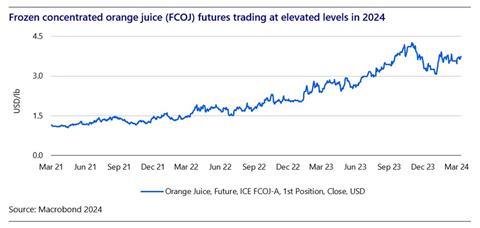
Rising producer costs for juice companies are also trickling down to consumers, The Grocer’s Key Value Items (KVI) tracker, below, showed.
The average price for own-label orange juice (one-litre) across the UK’s biggest supermarkets on the last week of April was up by 21% year on year at £1.34.
The average price was also up 5% month on month, and 2% up from the week before.
The high prices are negatively impacting consumption and in turn contributing to record-high commodity prices. Global retail data showed a decline of 15% to 25% in volume terms over the past year, Rabobank said.
Not only is OJ supply under pressure, but quality concerns are also having an impact on prices – the spreading of citrus greening infection has forced farmers to harvest earlier than usual, leading to “disappointing” juice yields, commodity analysts at Mintec pointed out.
The US Department of Agriculture estimates that global ending stocks will close the 2023/24 harvest at a 150,000 tonnes, a significant drop from the 200,000 tonnes at the end of 2022/23 and well below the 10-year average of 400,000 tonnes.
The lack of available stocks has also forced juice companies to alter taste profiles, which, combined with high prices, hurts consumer perception.



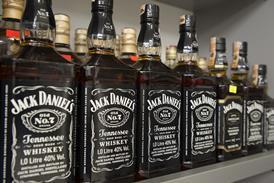


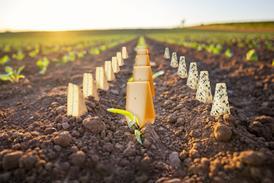
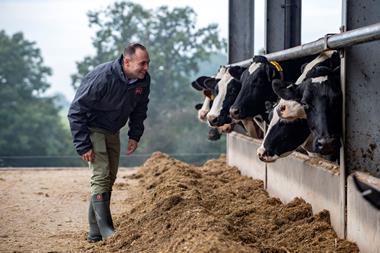







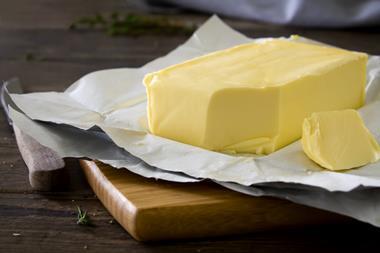


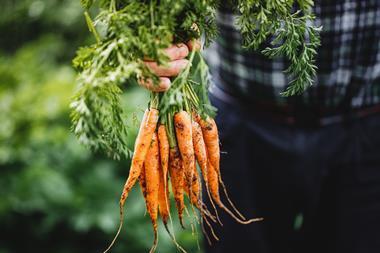
No comments yet